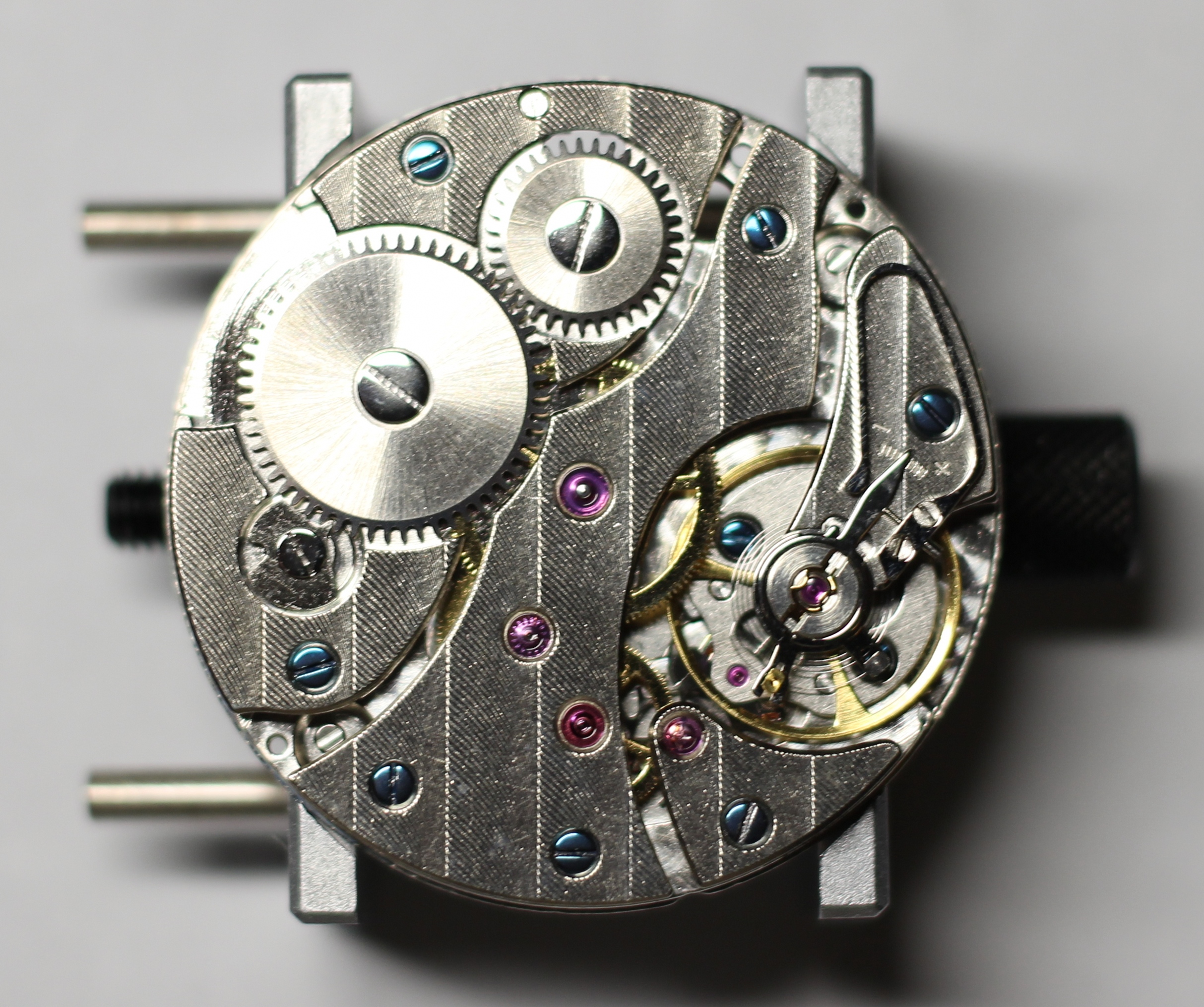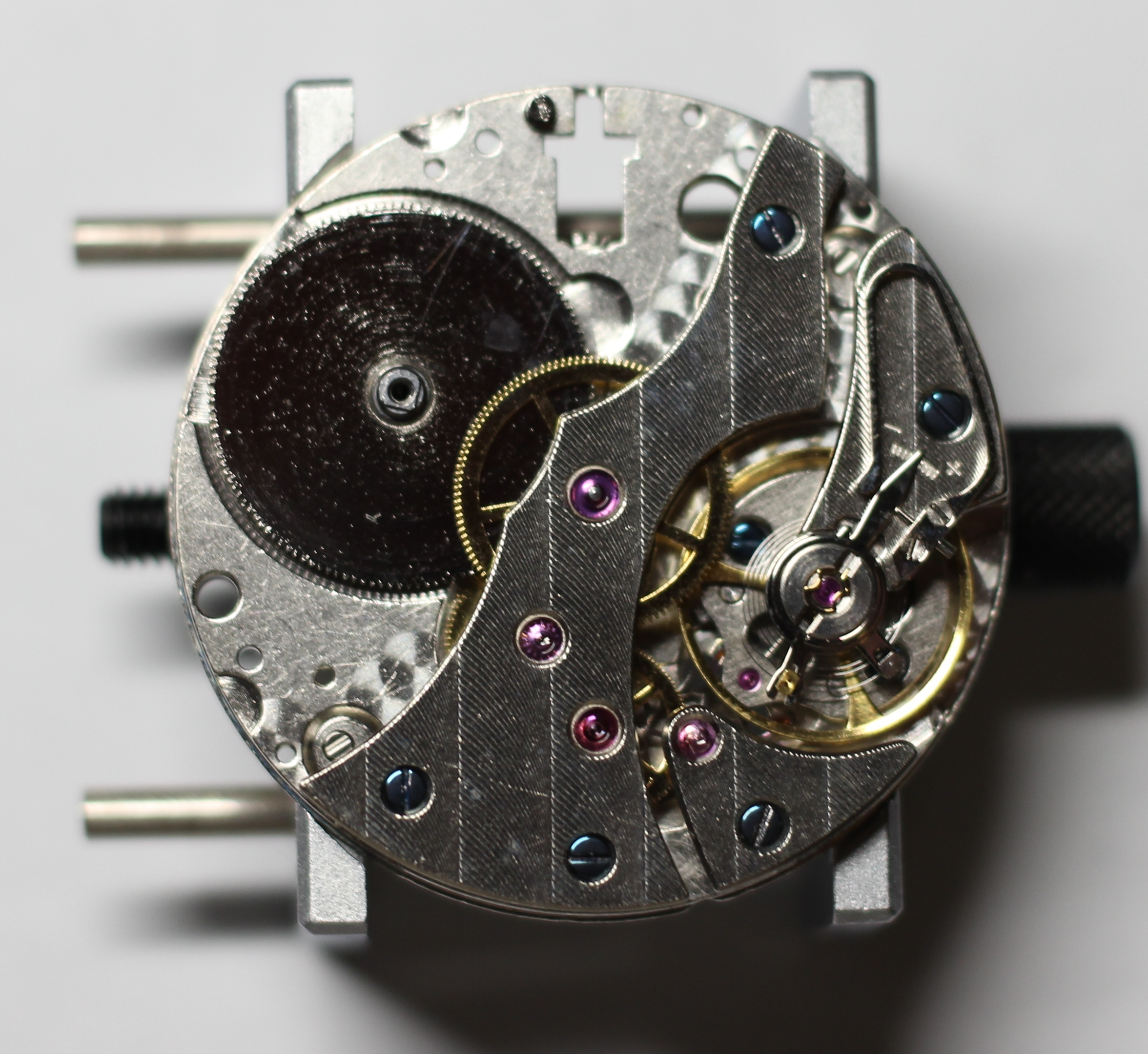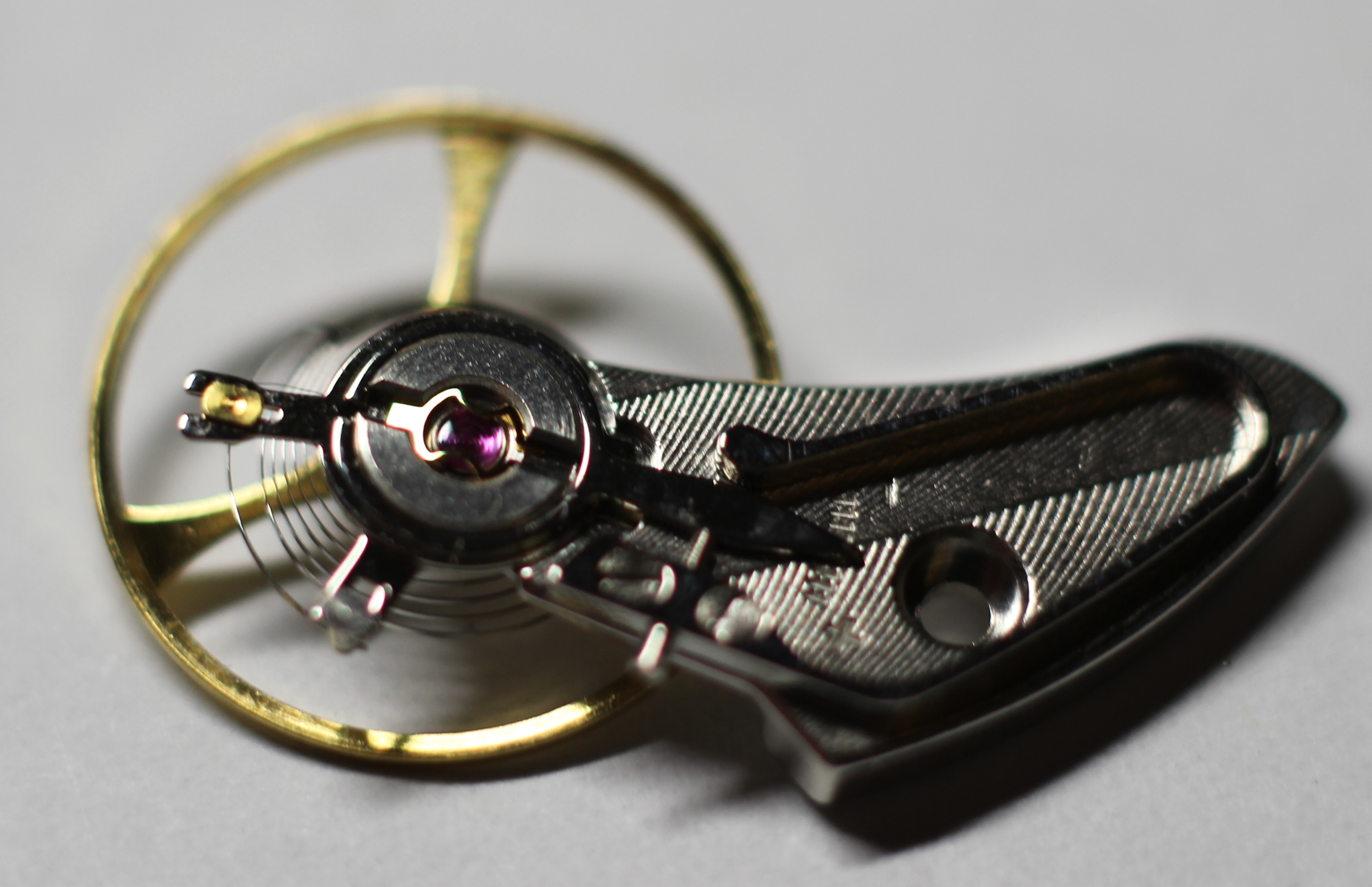- The technical details can be found on ETA’s website on the pages of the 6497-1, 6497-2, 6498-1, and 6498-2.
- ETA’s training tool has a page for the movement that takes you step by step through the disassembly.
- Additional information is available on Worn & Wound’s page devoted to the movement.
- The Caliber Corner page compares the 6497 to the 6498.
The 6497 and 6498 were designed as pocket watch movements and are therefore quite large. Their size makes them easier to manipulate, which is why they are often used to train watchmakers.
The difference between the two movements is the location of the small seconds, at 6 on the 6498 and 9 on the 6497 (or 3 and 6 in a pocket watch with the crown at the top). There is also a difference in the gear train as in the 6497 the fourth wheel is above the third wheel, whereas in the 6498 it is underneath.
There are 2 main versions of each movement the -1 and -2. The second tends to be better finished and can beat at either 2.5 or 3Hz, whereas the -1 versions are 2.5Hz only.
Let’s look at the gear train of the version of the 6497 in ETA’s training tool to illustrate ratios, which might differ from the version deconstructed below.
- Escape wheel has 15 teeth and its pinion has 10 leaves
- Fourth wheel (carrying small seconds) has 120 teeth and its pinion has 8 leaves
- Third wheel has 60 teeth and its pinion has 10 leaves
- Centre wheel has 80 teeth
The movement beats at 21’600 beats per hour or 6 beats per second (3Hz). But the escape wheel only advances by half a tooth per beat, or 3 teeth per second. As the escape wheel has 15 teeth, this means it turns every 5 seconds. As the ratio of the fourth wheel to the escape pinion is 12 (120/10), it means the fourth wheel turns every 60 seconds (it carries the small seconds hand).
The fourth wheel completes a rotation every minute and as the ratio of the third wheel to the fourth pinion is 7.5 (60/8), it means the third wheel completes a rotation every 7.5 minutes.
The ratio of the centre wheel to the third pinion is 8 (80/10), meaning the centre wheel rotates every 60 (7.5×8) minutes or once an hour (it carries the minute hand).
In the pictures below, part of the setting mechanism is missing as it flew across the room.























